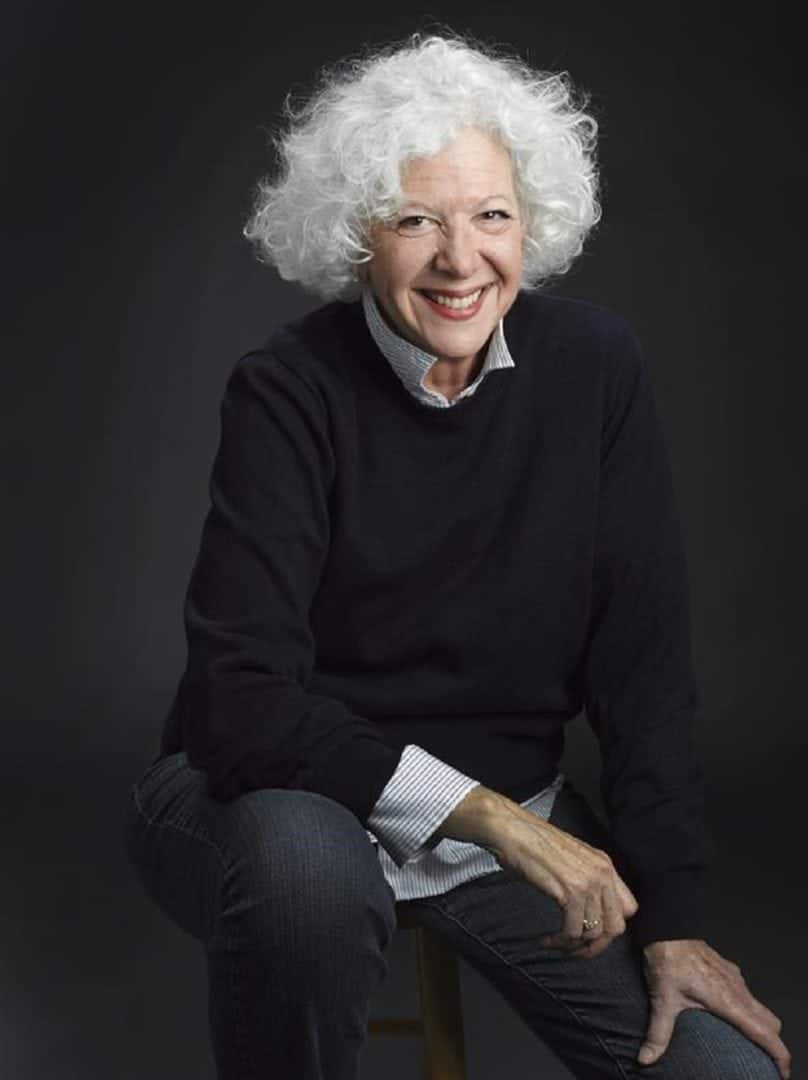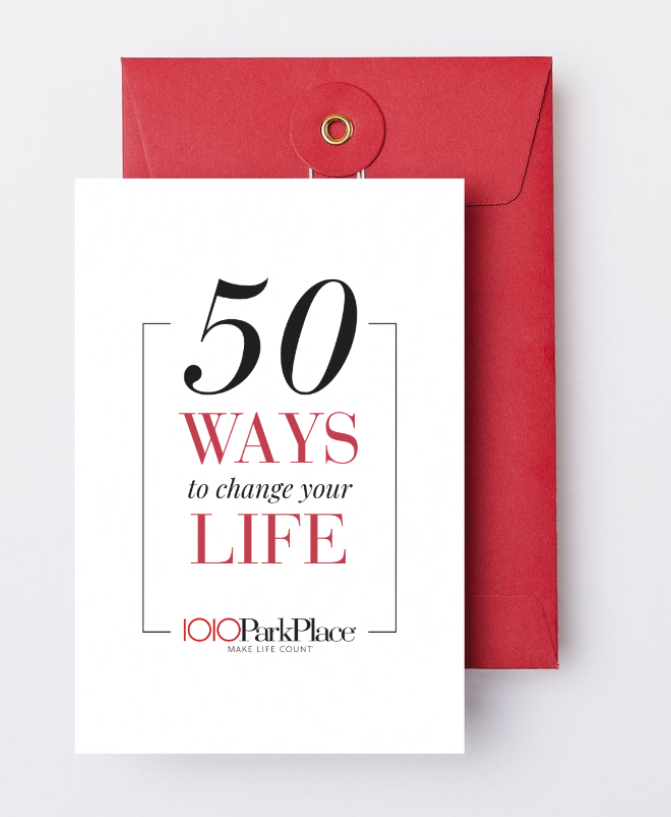When depression, grief or fears about a medical problem swoops down and swallows us whole—mind, body and soul—it’s sometimes impossible to put one foot in front of the other. For much of the last eight years, depression made me feel like I was falling from a thousand-story building, but Guided Imagery and the sound of Belleruth Naparstek’s voice slowed my fall. It’s allowed me to gather myself together, again, and find my way.
Last week I spoke with Belleruth Naparstek, a pioneer of Guided Imagery, and she’s everything… and more… I’d hoped.
Belleruth Naparstek, founder of Health Journeys.com, is a Clinical Social Worker with a Masters in Social Work, who trained specifically in Mental Health. She specialized in groups, kids, families and Post Traumatic Stress (PTSD). As Belleruth said, she “saw just about every kind of person you can imagine.”
Guided Imagery https://www.healthjourneys.com/guided-imagery-101 (sometimes called guided meditation, visualization and guided self-hypnosis) is a gentle but powerful technique that focuses the imagination in proactive, positive ways. It has the ability to deliver multiple layers of positive, healing, motivating messages through simple images and metaphors when the listener is in a relaxed state. Here’s a sample of one of her audios:
For years I’ve listened to Belleruth Naparstek’s audios on Chemotherapy, Grief, Anxiety, Panic Attacks and Depression, and the sound of her voice is calm and reassuring. To my utter delight, when we spoke on the phone, Belleruth has a wonderful, spontaneous laugh, and she’s quick to laugh. It was obvious she loves helping people. I’ve edited parts of our conversation:
BRENDA: What was your original kernel… that spark that caused you to even think about the process that became Guided Imagery?
BELLERUTH: I was a therapist for 33 years. I loved being a therapist and understood every piece of the process. When people would plateau and reach a point where they felt like weren’t growing anymore—they were probably just incorporating all the changes and getting ready for the next big jump—it would frustrate them. I had taken a lot of hypnosis courses and loved it, and thought I could make a personalized tape for this person and help them—give them a little push into the next plateau—using things from their life that I knew motivated or inspired them. So I started making individual tapes for any patient who wanted it. That was almost all of them.
Most people responded very well to them, but it was hard for me to know whether it was the placebo effect of having your therapist take the extra time to make this gift for you and show how well she knows you—so that in and of itself is probably a positive experience—or if it actually helped them because of the technique. I didn’t learn that until the nurse on the chemo unit of the Ireland Cancer Center asked me to make tapes for perfect strangers for chemotherapy. They all got the same tape, and all responded to it in varying degrees of positivity, and I learned this technique is useful to most people if they buy into it and listen to it a few times.
BRENDA: I would also imagine your patients were comforted by hearing your voice outside of your office.
BELLERUTH: That is brilliant of you to say that. I think a person’s voice… it’s called the transitional object… It’s the equivalent of having a blankie, or a thumb or a teddybear. What all of us little humans did throughout the day to handle our anxiety was to hang-on to something that was basically a mother substitute. It gets more sophisticated as we get older. It’s images of people or the memory or tambour of their voice, even the way their hair smelled. It’s all of that. So my voice was the ultimate teddy bear.
BRENDA: When you first began developing and distributing Guided Imagery you were met with a lot of skepticism. What changed that?
BELLERUTH: In the beginning people thought we were trying to compete with allopathic (mainstream) medicine. The break through was that chemotherapy nurse who saw the value of it and really took up the mantle and became the champion of Guided Imagery for the cancer center. She had me make a cassette tape for that unit they would hand out to various patients. There was a demand for it because it really helped people and the nurses were thrilled because they’re the ones, sitting with patients, wishing they could do something. These tapes really did reduce anxiety, some fatigue and nausea and made people feel empowered.
We now have research that shows Guided Imagery reduces blood loss and complications, length of time to bowel motility post surgery, speed of ventilator weening, saves HMO’s money. Studies on Guided Imagery show improved performance in sports, or in rehab… getting motor activity back after a stroke or with Parkinson’s. The field has grown and changed enormously.
BRENDA: I’ve used custom hypnosis tapes and Guided Imagery to help me through a complete hysterectomy and 10 breast cancer surgeries. After one of those surgeries the anesthesiologist came to my hospital room. He was puzzled because he didn’t have to give me anywhere near the amount of anesthesia the surgeon required for this long surgery, and he didn’t know why. When I explained I’d been listening to a hypnosis tape that said my body would begin to relax on a muscular skeletal basis and produce it’s own anesthesia and pain meds, his jaw dropped. He’d heard of this, but I was his first patient who’d used it. (I also told Belleruth about two other surgeries that had equally amazing results because of hypnosis and/or Guided Imagery.)
BELLERUTH: (Laughes.) You are the poster child for all things mind/body! (Laughs, again.) Medicine has changed in surgical suites because patients were coming in with tapes just like yours. They really were the first line of persuasion. A lot of patients would go to their surgeons and say you should give these out to people. We used to have to go into a hospital and explain what Guided Imagery is and why we think our tapes are good, but we don’t have to do that first part anymore… ever.
BRENDA: My doctors and nurses were so shocked at my recovery, lack of using any pain meds after long surgeries. The incidents of my recovery circulated the hospital and doctors, and nurses would come in to talk with me and my husband, who’d been right there and could back me up. They didn’t know what to think.
BELLERUTH: Even with researchers… If the research results just defy the version of reality, they think there’s something wrong with the research or it was run wrong. People have trouble when patients, like you and your results, defy the norm. It causes them to either change their whole set of assumptions about what is real and true, or they just have to say there’s a mistake here.

BRENDA: Your grief audio helped me after my husband died. The breakthrough for me was your image of “everybody who loves you, past, present and future, is gathered around you.”
BELLERUTH: Yes, and in a sense they are. We carry them with us, and that’s how the resolution of grief is when we take the image and internalize it and carry them with us in our heart. We have crowds and crowds of people we carry with us and who sustain us. We don’t even know we’re doing it, but we’re leaning on them, and they’re helping us all the time.
BRENDA: I listened to your depression audio for a long time and then thought, I’m fine. A few years later, I was depressed, again, but I can’t take most meds. So since January 1st of this year, I play your Guided Imagery Affirmations for Depression while I’m getting dressed in the morning. Sometimes twice. Your Affirmations for Depression are my anti-depressants.
NOTE; I AM NOT RECOMMENDING GUIDED IMAGERY INSTEAD OF TAKING ANTIDEPRESSANTS. I’M JUST TELLING YOU MY STORY. I AM, HOWEVER, STRONGLY URGING YOU TO GET HELP TO ALLEVIATE YOUR DEPRESSION.
I know it almost by heart, and I think it’s brilliant how you begin by planting the seed that “It’s your inner truth of the moment,” which means you may not feel that way, tomorrow.
BELLERUTH: And you don’t have to fight with it, today. You can just accept it; let it be; it will move of it’s own accord. Nothing stays the same. It’s basically a form of mindfulness. You observe your thoughts and feelings, and you don’t try to resist them, praise them or blame them. You just watch them, and they’ll move along.
BRENDA: You give us permission—on so many levels—to let go of harsh expectations of ourselves and others. Then you help us picture ourselves as healthy, vital and strong.
BELLERUTH: The affirmations are designed to be in the first person and in the present. So if you can dive into the experience, it really does create the template for the future. People can become quite skillful at going as deeply as they need to go for healing.
BRENDA: It’s wonderful how you’ve done this, and how you take us through it and show us we’re going to move forward with purpose.
BELLERUTH: That’s the other thing. What really helps, especially with depression, is a sense of meaning and purpose. It’s a way of prizing yourself by prizing what you aspire to do and contribute, and I think that’s what all of us want, don’t you think so?
BRENDA: Absolutely. For one of my blogs I started researching “purpose” and discovered women who no longer have a sense of purpose https://1010parkplace.com/women-over-50-unspoken-health-risk/ —maybe they’re empty nesters or retired—have a far higher instance of disease and depression than women who do feel like they have purpose.
BELLERUTH: I think the statistics back that up, too. It’s also a time of great growth and change, but when all of the things that have structured you and grounded you are taken away, then there is this massive confusion, and you can be in danger of developing some sort of illness or depression. You’re also in this wonderful “no man’s land” where you can reconstruct the meaning in your life to be something hugely satisfying… even more satisfying than what it was before. But it is a time of great change, and as a result, there’s some danger to it, but there’s also some incredible possibilities.
BRENDA: I write a lot about survivorship, perhaps because I started life as the first baby—and six weeks premature—to survive a complete blood transfusion… the RhNegative factor. I also had what I call my “involuntary time in the jungle.” I was kidnapped by the Guatemalan Military Commandos.
When I made it back I told the “Boyfriend from Hell,” and he said, “What did you think was going to happen, traveling in that part of the world by yourself?” He was very cold about it, and made me feel like everything that happened was my fault. Except for my late husband, I haven’t talked about it since. I can see how rape victims are treated… although that’s not my story. I can see how people say they invited it. I would think the soldiers you treat for PTSD have some of the same issues.
BELLERUTH: Oh, yes! If soldiers come back, recriminating themselves, it’s usually about three things: I’m a coward, or I’m a killer, or I should have done more to help him or save him. Rape victims do it to themselves, sometimes… It was my fault. If only I had done this, this and this… It wouldn’t have happened.
And then it’s complicated by the fact that rape victims tend to go into a trauma trance, but it’s a dissociated state where they’re not quite home. Predators recognize that person who isn’t quite inhabiting their body, or is a little spacey, or looks a little fragile. They identify that as potential prey. A person who does a kind of disassociation is at risk of being attacked, again. Or at risk of having a terrible motor vehicle accident because they’re not quite paying all the attention they should be as opposed to somebody who’s really here, walking with a firm step on the ground. But it’s not their fault. It’s a symptom.
BRENDA: How do you spend your days now?
BELLERUTH: I basically, reluctantly, stopped because I was doing so much speaking and writing and producing audios. I made a cognitive choice because I could help more people if I recorded tools for them, as opposed to there were only so many people I could sit in a room with per day. I liked the idea I could make these audios, and I could help people. People don’t like getting help. They don’t want to go see somebody, so I liked the idea you could give those folks a tool, and they can take it home and use it as they wish, and they’re beholding to nobody.
BRENDA: I think a lot of people are also worried about not being in control or losing control in front of someone, or telling their dirty secrets.
BELLERUTH: Yes. They would feel it was a dirty secret. I would feel more like it was a sacred mystery that needs to be shared.
BRENDA: (Laughing.) I think that’s me. My mother used to say, ‘Brenda, you don’t have to tell everything you know!’
BELLERUTH: (Laughing, laughing…)
BRENDA: So I guess I’ve always been this way. My readers leave comments on my blog like, “This is so brave of you to share this,” and I’m thinking, “Really?”
BELLERUTH: (Laughing) That’s wonderful. You’ve found your calling for sure. You must feel like you’re using all these disparate, great parts of yourself to produce this blog and disseminate information.
BRENDA: I love what I’m doing. One of my readers said: “I love coming to your blog because I never know what you’re going to talk about.” That’s rewarding!
BELLERUTH: I love your website, by the way. It’s a dazzle. It’s so clean and crisp and attractive, so I applaud you for the wonderful visuals.
BRENDA: Thank you very much. I’m grateful you took the time to talk with me, today. I’m so appreciative. Thank you, again.
BELLERUTH: Stay strong and well, and keep saying everything you know.
BRENDA: One more thing… Where does the name, Belleruth, come from?
BELLERUTH: (Laughs.) That was my father’s invention. I have an older sister and a younger brother with perfectly normal names. I don’t know… My father just had a moment and made me Belleruth, and I’m not from the South. I’m from Boston!









24 thoughts on “AN INTERVIEW WITH GUIDED IMAGERY PIONEER BELLERUTH NAPARSTEK”
Excellent information, Brenda. I agree that the tapes are a very important follow up or addition to therapy. Back in the early nineties I was waking up with severe panic attack’s and not being able to sleep. I have always been a strong person and did not believe in seeking outside help or therapy. Except that this was so bad that I went to a hypnotherapist and she was amazingly helpful. She recorded each of our sessions and I went home with the tape. And played it each evening prior to going to sleep. It only took a few months for my panic attacks to go away, and even to this day I can play a tape if I am feeling panicky or are having trouble sleeping and it still works for me. So I am a true believer in guided imagery and am very interested in Belleruth’s information.
Brenda, thanks once again for a very pertinent and enlightening bit of information.
XOXO
Hi Michaele, Great to see you here, again! Sometimes I’ve listened to old hypnosis tapes, and like you’ve experienced, they help me immensely. Thanks for sharing your story and reconfirming how effective hypnosis and guided imagery can be. Brenda
Excellent article Brenda! Guided Imagery and Visualization are wonderful, and very useful, tools. I’m going to forward to a few people whom I know will benefit from having this knowledge available!! Thank you!
XO Donna
Brava! Thank you, Donna! xoxox, Brenda
Great interview Brenda. I have never tried it but I am certainly open to it!
Hi Haralee, Being open to something is the first, positive step we can take to accomplish most anything. Yes, tuck it away in the back of your mind should the need arise. xoxox, Brenda
how very cool! i’ve been practicing and facilitating guided imagery meditation for years! i have produced podcasts of a few of them over recent years, but will definitely have more coming as we are now producing an enlightening (hopefully) new show GD Spirit Pub! Hope you’ll check it out. Great interview!
Hi Meg, I checked out your website! It looks as though you’re a pioneer in the green and healthy living arena. That’s terrific, and it’s great that you’re sharing your knowledge with your listeners. I hope our paths cross, again. Brenda
I am working on guided imagery with my therapist nowbecause my PTSD symptoms returned with a vengeance after witnessing a murder recently. I was so scared at first but am such a believer now.
Hello!! I hear another book in your future! Girlfriend… you and I lead soap opera lives! Have you blogged about that, and I missed it? Just left you a comment on your post about Dina. Happy to hear you’re working through this horror. Yes, be proactive and get your PTSD under control. BTW, Belleruth Naparstek’s PTSD audios are used by a great many mental health professionals and hospitals who are treating returning soldiers. Sending you my love, Brenda
Thank you for introducing me to this amazing lady! I look forward to listening to her meditations and sharing them with my clients.
Hi Patti, That would be wonderful. I know they would benefit from them. Thank you, Brenda
Hello Brenda, thank you for introducing BelleRuth to us and I found her interview fascinating. I believe, my daughter, used a form of guided imagery to help with her labour and she found it very helpful. I also love BelleRuth’s comment that the voice can be like a teddy bear or blankie. Thank you for sharing with us at #MLSTL and I’m going to delve more into this area. Have a beautiful week.
Hi Sue, Helping with labour… I have a friend who used it for back pain. Thank you for sharing and letting me know. Brenda
FASCINATING BRENDA……………XX
Thanks for stopping by and leaving me a comment, Elizabeth. xoxox, Brenda
That was really interesting Brenda – especially the examples of how it works so well for you and that it’s not something that replaces modern medicine, but it enhances outcomes – something that we all need to look into more! BelleRuth’s voice was just so restful and calming – I can see why you love her stuff so much! #MLSTL 🙂
Hi Leanne, We all like to think we’re educated about the mind/body connection. Many of us practice stress relief tools like yoga, or we meditate. Guided Imagery is a powerful tool to add to our arsenal. Happy to see you here!! Brenda
Hi, Brenda – Thank you for sharing this information on Belleruth Naparstek and Guided Imagery. This was fascinating to read!
Thanks for reading, Donna. Just tuck it away in your mind and know it’s there to help you… Brenda
this interview is amazing. I had no idea you dealt with depression, I did as well and I understand how awful it was. and being kidnapped, I don’t even know where to start with that. Anything that has to do with the mind is fascinating to me. My therapist guided me through my struggles by letting me know I could control my thoughts, of course that is not very similar to what this incredible woman did, but it fits in with the mind and how amazing it is. I know there is so much more we could be doing. This was something I have heard of only in passing. But this woman….what an incredible woman. Thank you for posting this fascinating interview.
xxoo
Hi Donna, I’m sorry you’ve dealt with depression as well. I made my way through everything except losing James and his entire family the same day. My experiences with guided imagery have taught me that for the most part, it IS mind over matter. We can control ourselves and our reactions to most everything. Keep her audios in mind if you ever need them… for anything. xoxox, Brenda
Brenda life intervened before I could reply to this wonderful article but I am so compelled to do so. I needed to hear every word and it touched me in ways I found totally unexpected. Thank you for continuing to dare to be you. Your readers and friends so need your constant breath of fresh air.
Thank you, dear Kona! I’m happy it gave you strength. I’m also grateful for reading my words and for your friendship. They mean everything to me. xoxox, Brenda
Comments are closed.